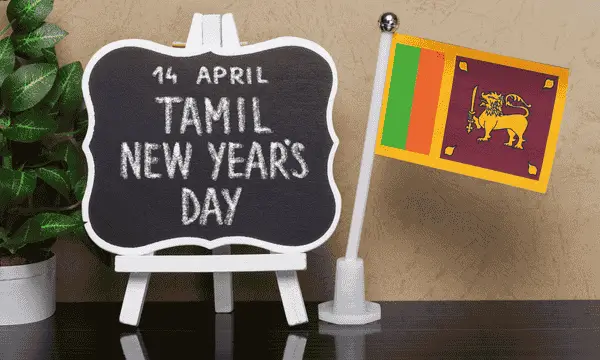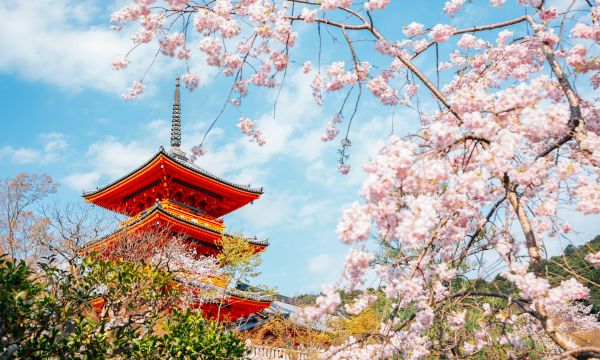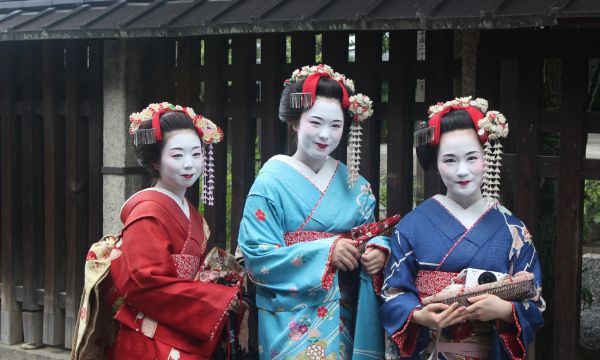Last updated on November 24th, 2024 at 07:05 pm
Sri Lanka, an island paradise nestled in the heart of the Indian Ocean, is an absolute gem for travelers seeking a unique blend of culture, adventure, and nature. With its lush landscapes, rich history, and warm hospitality, it’s no wonder that more and more travel enthusiasts, adventure seekers, and digital nomads are setting their sights on this captivating destination. But to truly experience all that Sri Lanka has to offer, best time to visit Sri Lanka is crucial.
In this blog post, we’ll explore the best time to visit Sri Lanka, taking into account the country’s diverse climate zones, peak and off-peak seasons, and special events that could make your trip unforgettable.
Show the relevant content
ToggleOverview of Sri Lanka as a Travel Destination
A Land of Endless Possibilities

Sri Lanka is renowned for its stunning beaches, verdant tea plantations, and ancient ruins. From surfing in Arugam Bay to exploring the cultural triangle of Anuradhapura, Polonnaruwa, and Kandy, there’s something for every traveler. The diversity of experiences makes it essential to plan your visit based on what you want to see and do.
Also Read: When is the best time to visit South Korea
The Importance of Timing
The timing of your visit to Sri Lanka can significantly enhance your experience. The country experiences two main monsoon seasons, which affect different regions at different times. Understanding these weather patterns will help you make the most of your trip, whether you’re planning to relax on the beach, trek through the highlands, or immerse yourself in local culture.
Climate Zones in Sri Lanka
Sri Lanka’s climate is divided into several zones, each with its own unique weather patterns. The southwest coast and central highlands have a tropical rainforest climate, while the northern and eastern parts of the island experience a drier climate. Knowing these distinctions will guide you in choosing the ideal time and place to visit.
When is the best time to Visit Sri Lanka
Peak Tourist Seasons and Popularity

The peak tourist season in Sri Lanka typically runs from December to March. During these months, the weather is dry and sunny on the west and south coasts as well as in the highlands, attracting visitors seeking sun-soaked beaches and cultural tours. This is also when many festivals and events take place, adding vibrancy and excitement to your travels.
Benefits of Visiting During Off-Peak Season
Traveling during the off-peak season, from May to August, offers several advantages. Not only do you get to enjoy fewer crowds, but you’ll also find more affordable accommodations and flights. Plus, the eastern coast is at its best during this time, providing excellent opportunities for outdoor adventures and marine exploration.
Choosing Travel Dates Based on Activities
Consider what activities are most important to you when planning your visit. For example, if wildlife safaris are high on your list, visiting during the dry season will increase your chances of spotting animals at waterholes. Alternatively, if you’re into surfing, the east coast is prime from April to September.
Sri Lanka by Month
January
Weather Conditions
January is one of the best time to visit Sri Lanka, especially on the west and south coasts. The weather is generally dry and sunny, making it perfect for beach lovers and outdoor enthusiasts. The central highlands also enjoy pleasant temperatures, ideal for trekking and exploring.
Key Festivals and Events
In January, the Duruthu Perahera, a spectacular procession held in Colombo, marks the beginning of the Buddhist calendar year. It’s a vibrant celebration filled with traditional music, dance, and elephant parades.
February
Weather and Tourist Attractions
February continues to deliver excellent weather in the southern and western parts of Sri Lanka. It’s a great time to explore popular tourist attractions like Galle Fort and the historic city of Kandy without the scorching heat.
Celebrations and Cultural Highlights
The Navam Perahera festival in Colombo is a must-see in February. It features a grand procession of drummers, dancers, and elephants, offering a glimpse into Sri Lanka’s rich cultural heritage.
March
Transition into Hotter Weather
March marks the transition into warmer weather, especially in the lowlands. While it may start to heat up, the climate remains bearable for most outdoor activities.
Notable Cultural Events
The Maha Shivaratri festival, dedicated to the Hindu god Shiva, takes place in March. It’s a time of fasting, meditation, and night-long vigils at temples across the country.
April
Weather Overview
April is one of the hottest months in Sri Lanka, with temperatures rising significantly. However, this is balanced by cool breezes in the highlands, making it a best time to visit Sri Lanka such as places like Ella and Nuwara Eliya.
Significance of the Sinhala and Tamil New Year

April brings the Sinhala and Tamil New Year, a major cultural event celebrated with feasting, fireworks, and traditional games. It’s a wonderful opportunity to experience local customs and hospitality.
May
Onset of the Southwest Monsoon
May sees the onset of the southwest monsoon, bringing rain to the southern and western regions. While this might deter some travelers, it’s an excellent time to visit the north and east coasts.
Festivals and Local Activities
Vesak Poya, commemorating the birth, enlightenment, and death of the Buddha, is celebrated in May. Streets are adorned with lanterns, and temples hold special ceremonies.
June
Weather Patterns and Travel Tips
June is a quieter month in terms of tourism, with the southwest monsoon in full swing. However, it’s one of the best time visit Sri Lanka in order to explore the cultural heartland and eastern beaches, where the weather remains relatively dry.
Off-Peak Travel Advantages
Traveling in June means fewer tourists, allowing you to enjoy popular sites like Sigiriya Rock Fortress and Dambulla Cave Temple without crowds. Plus, you’ll benefit from off-peak pricing.
July
Weather Dynamics
July is characterized by varied weather patterns, with the southwest monsoon tapering off. The east coast remains sunny and warm, perfect for beach activities and snorkeling.
Major Festivals such as Esala Perahera
The Esala Perahera, one of Sri Lanka’s most iconic festivals, takes place in July. Held in Kandy, it features elaborate processions and cultural performances, showcasing the island’s vibrant traditions.
August
Weather and Landscape Changes
August offers pleasant weather on the east coast and in the central highlands. It’s one of the best time to visit Sri Lanka to explore the lush landscapes of Horton Plains National Park and indulge in watersports on the eastern beaches.
Cultural and Religious Events
Sri Lanka’s National Day is celebrated in August, commemorating independence from colonial rule. It’s a day of national pride, marked by parades and cultural performances.
September
Transition into Drier Season
September marks the transition into a drier season, especially in the northern and eastern regions. It’s an ideal time to explore the cultural sites of Anuradhapura and Trincomalee.
Travel Tips for Visiting in September
September is a shoulder season, offering a balance between good weather and affordable travel options. Consider visiting lesser-known destinations like Jaffna for an authentic experience.
October
Weather Fluctuations
October can be unpredictable with weather fluctuations as the inter-monsoon period begins. However, the northern and eastern areas still offer pleasant conditions for travel.
Festivals and Local Attractions
Deepavali, the Hindu festival of lights, is celebrated in October. It’s a time of joy and illumination, with homes and streets adorned with lamps and candles.
November
Beginning of the Northeast Monsoon
November marks the start of the northeast monsoon, affecting the east coast and northern regions. While the rain may deter some travelers, it’s a good time to visit the southwestern areas.
Impact on Travel Plans
Plan your itinerary carefully in November, focusing on regions less affected by the monsoon. Colombo, Galle, and the hill country offer exciting experiences despite the rain.
December
Return of Drier Weather
December sees the return of drier weather in the south and west, making it a popular month for tourists seeking sun and warmth. It’s also the holiday season, adding festive cheer to your travels.
Holiday Season Highlights
Christmas and New Year’s Eve are celebrated with enthusiasm in Sri Lanka, particularly in Colombo and Negombo, where vibrant parties and events take place.
Worst Time to Visit Sri Lanka
Monsoon Impacts on Travel and Activities
The monsoon seasons can significantly affect travel plans and outdoor activities. Heavy rains may lead to delays and disruptions, especially in coastal and hilly areas.
Regions Most Affected by Adverse Weather
The southwest monsoon primarily affects the western and southern regions, while the northeast monsoon impacts the northern and eastern areas. Understanding these patterns is crucial for planning your visit.
Tourist Challenges During Monsoon Seasons
Traveling during the monsoon can present challenges such as flooding, landslides, and limited access to certain attractions. It’s important to stay informed and flexible during these times.
Sri Lanka Weather by Month
Detailed Look at Weather Patterns and Regional Differences
Sri Lanka’s weather varies greatly by region and month. The southwest experiences heavy rainfall from May to August, while the northeast is wet from October to January.
Temperature Variations and Humidity Levels
Temperatures remain relatively consistent throughout the year, ranging from 77°F to 95°F, with high humidity levels. The hill country offers cooler temperatures, providing a refreshing escape from the heat.
Best Regions to Visit Each Month Based on Weather
Each month presents unique opportunities for exploring different parts of Sri Lanka. Researching regional weather patterns will help you plan the perfect itinerary for your interests.
Conclusion
Recap of the Best and Worst Times to Visit
Sri Lanka is a year-round destination with something to offer every traveler. While the best time to visit depends on your interests and activities, December to March is ideal for most regions, while the East Coast shines from April to September.
Encouragement to Plan Based on Personal Preferences and Activities
Whether you’re drawn to cultural festivals, wildlife adventures, or beach relaxation, planning your visit based on your personal preferences will ensure a memorable experience.
Final Tips for Preparing for a Trip to Sri Lanka
Before you go, make sure to check local weather forecasts, pack appropriate clothing, and stay updated on travel advisories. Remember to respect local customs and traditions to make the most of your Sri Lankan adventure.
Frequently Asked Questions
Which month is best to visit Sri Lanka?
December to March is considered the best time to visit most parts of Sri Lanka, offering dry and pleasant weather for exploring the west and south coasts.
What month has the best weather in Sri Lanka?
February is often regarded as the month with the best weather, featuring sunny days and mild temperatures across the island.
What is the rainy season in Sri Lanka?
Sri Lanka experiences two rainy seasons: the southwest monsoon from May to August and the northeast monsoon from October to January.
What time of the year is best to go to Sri Lanka?
The ideal time to visit Sri Lanka depends on your preferences, but the period from December to March is generally favorable for most tourist destinations.
Worst time to visit Sri Lanka?
The monsoon season can be challenging for travel, particularly the southwest monsoon season, which lasts from May to August.
Is November a good time to visit Sri Lanka?
November can be wet due to the northeast monsoon, but the southwestern regions are still enjoyable during this time.
The worst time to visit Sri Lanka from India?
The monsoon periods, May to August and October to January, are generally less favorable for travel from India.
Is it safe to travel to Sri Lanka right now?
Sri Lanka is generally safe for travelers, but it’s always wise to check current travel advisories and local news before planning your trip.
Is October a good time to visit Sri Lanka?
October can be unpredictable with weather fluctuations, but certain regions remain accessible and enjoyable.










